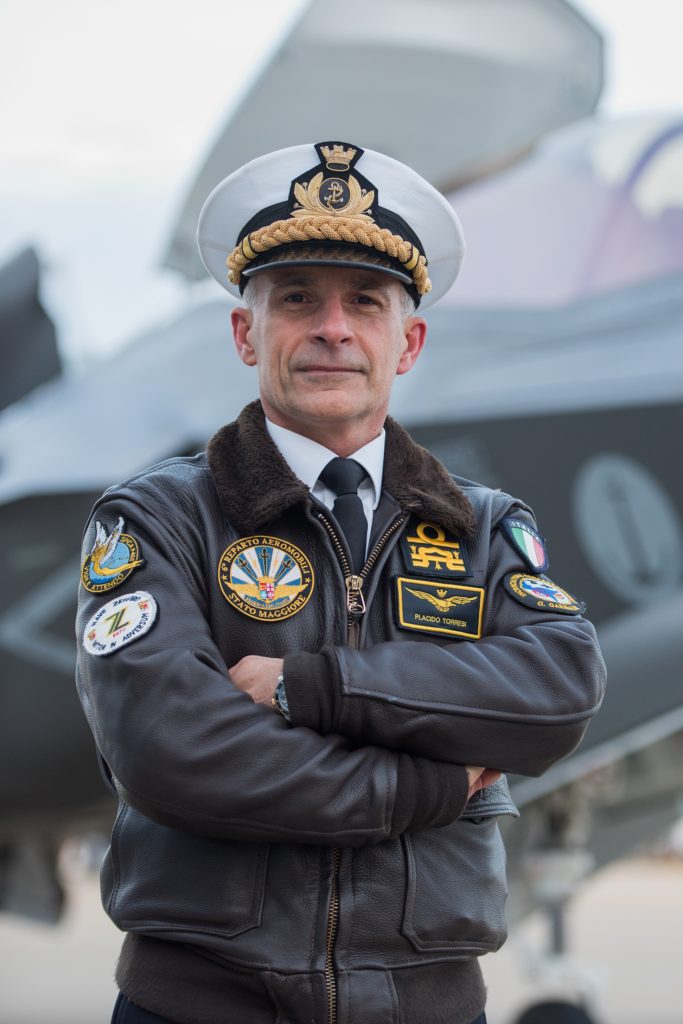17 July 2019
Interview with...Admiral Placido Torresi, Commander of the Italian Navy's Air Forces
Commander of the Italian Navy's Air Forces
[Cleared n°6 - anno XVI - june 2019]
Commander of the Italian Navy's Air Forces
[Cleared n°6 - anno XVI - june 2019]

Admiral Torresi, as Commander of the Italian Navy's Air Forces can you describe the main tasks associated with the role you hold?
In my capacity as Commander of the Air Forces, my main task is to ensure efficiency and preparation of resources and training of personnel for the Naval Squadron, together with the necessary technical and logistical support for the flight lines.
The potential expressed by the Italian Navy's Air Forces is quite impressive: a workforce of about 1,800 military personnel and 200 civilians is responsible for handling 85 aircraft, planes and helicopters, distributed into six Air Groups located in the Aircraft Stations of Luni-Sarzana, Grottaglie and Catania, which are strategically located in the vicinity of the major national naval bases (respectively La Spezia, Taranto/Brindisi and Augusta).
Italy has two aircraft carriers in its fleet, the modern aircraft carrier Cavour and the cruiser-aircraft carrier Garibaldi. What activities are they engaged in at the moment and how many aircraft can each one take?
The Italian Navy was one of the first in the world to understand the importance of the use of aircraft to and from the sea. An aircraft carrier is a “self-contained” microcosm that has on board everything it needs to operate. The Cavour can house a mixed flight group, consisting of planes and helicopters, numbering about 20 aircraft, whereas the Garibaldi can carry a maximum of 16. From Naval Units of this type, therefore, you can promptly and effectively command and manage naval, air and amphibious military operations, but also activities of assistance to the civilian population, providing guarantees from the sea and in any theatre of operations. As a mobile command centre, an aircraft carrier is able to remain close to the area of operations, with obvious advantages in terms of rapid response to command, control and communication actions.
What is the difference between a Naval air-traffic controller aboard these giants of the sea and their land-based colleagues? Is there any coordination with civilian controllers while you are on a mission?
The job of Aircraft Controller is a delicate and highly responsible business. Ensuring the execution of the mission, acting as an aid to the aircraft for the representation of the external situation and, above all, providing the aircraft with useful information for returning on board after a mission is a responsibility that the Navy assigns to very highly trained men. In addition to scanning the skies with radar to identify friends and enemies, the Navy air traffic controllers help pilots to prepare their flight plans and they carefully trace the routes of aircraft to avoid any collisions. I do not think there are enormous differences between a civil and a military flight controller except for the training; the main difference lies in the fact that our controllers are primarily naval staff with an operating background. Given the peculiarities and the context in which an aircraft carrier and a naval force in general has to operate, the control agencies with which they interface are typically military (the SCAMM) because flights towards or away from the Ship Control Zone (SCZ) fall within the category of operational air traffic (OAT). However, since this control area is always in motion and known only to the naval force, there are numerous occasions for interaction with the civil authorities.
An aircraft carrier is a constantly moving airport whose geographical coordinates are constantly changing. How do the CTA operate on board these vessels?
An aircraft carrier, in its role of advanced mobile air base, during take-off and landing phases, when planes are more vulnerable to threats, the operations on-board offer greater security than airports close to crisis areas.. Air missions conducted from the sea, allow you to stay away from prying eyes and provide the advantage of surprise. Also on board, every air traffic controller directs the aircraft in his/her area of responsibility via radio, ensuring that the minimum required distances and a fluid traffic flow are effectively maintained. The main tools of the trade are the radio, radar and flight plans. In the additional speciality regarding interceptors, the controller assists pilots during interceptions and aerial combats for the defence of the Naval group's area or during the phases of attack on land-based targets. The operational environment in which our controllers operate and the peculiarity of the use of naval aviation aircraft require our controllers to have a high degree of flexibility and resilience, particularly when in the vicinity of airspaces already defined and regulated in favour of general air traffic (GAT).


